Struggling With Your Change Management Transition Plan?
QI Macros has a ready-made transition planning template for you!
Change management begins by asking: "Where are we?" and "Where do we want to be?" To fill in the blanks between the current state and desired state we ask a third question: "How do we get there?"
QI Macros Transition Planning Matrix provides a tool and a method for answering all three questions. You can find the Transition Planning Matrix under Lean Six Sigma Templates, Planning Tools. While you may not need the whole transition planning matrix for every improvement, it will help you think about the change in a more robust way.
Here's a bird's eye view of a transition plan.
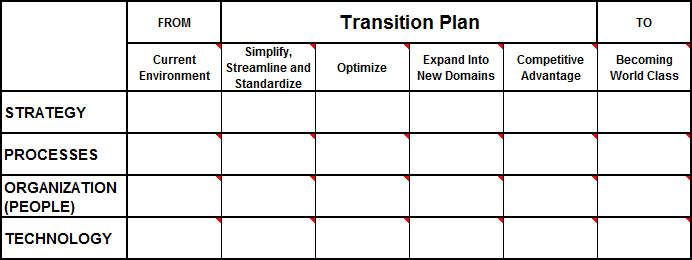
Where Are We? Where Do We Want To Be?
The Transition Planning matrix has a column to describe the current environment and one to describe the future desired environment. While it's often easy to describe the current state of affairs, it takes some thinking and lots of Post-it notes to describe the desired state.
How Do We Get There?
Then there are four key steps that describe most transitions involving Lean Six Sigma Projects:
- Simplify, Streamline and Standardize (Lean)
- Optimize (Six Sigma)
- Expand into New Domains (Innovation)
- Competitive Advantage (pulling ahead of the competition)
Most changes will require changes to people, processes and technology.
SPOT - Strategy, Process, Organization and Technology
The transition planning matrix has four main sections: Strategy, Process, Organization and Technology (SPOT) that describe the key elements of a business transition.
Strategy
Business strategy consists of three key elements: innovation, improvement and impression. To survive and thrive, businesses need to maximize one of these elements to establish their uniqueness and optimize the other two in service of the core strategy. Apple is known for innovation. Wal-Mart is known for improvement and operational efficiency. And Nordstroms is known for impression and customer satisfaction. Steve Jobs was known for innovation, but Tim Cook made Apple the operational excellence juggernaut that it is today.
Is your change about innovation, improvement or impression? How will this affect your communication about it? The Strategy section will help you address this facet of change.
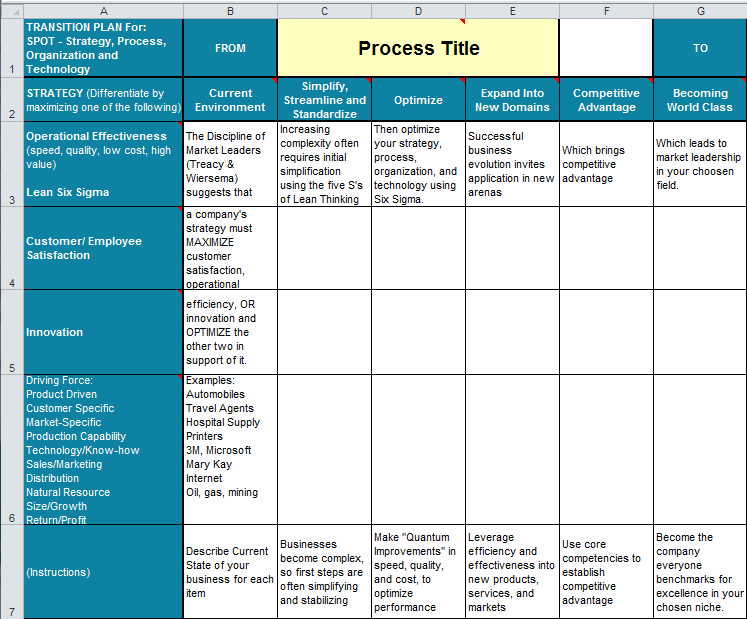
Process
The ability to consistently deliver is a function of process. This section of the Transition Planning Matrix covers essential business processes. There are six key processes: understanding the customer's needs and wants (i.e., voice of the customer), involving customers in design and delivery, marketing and selling, customer service and managing customer information.
How does your change impact and improve one or more of these key business processes?
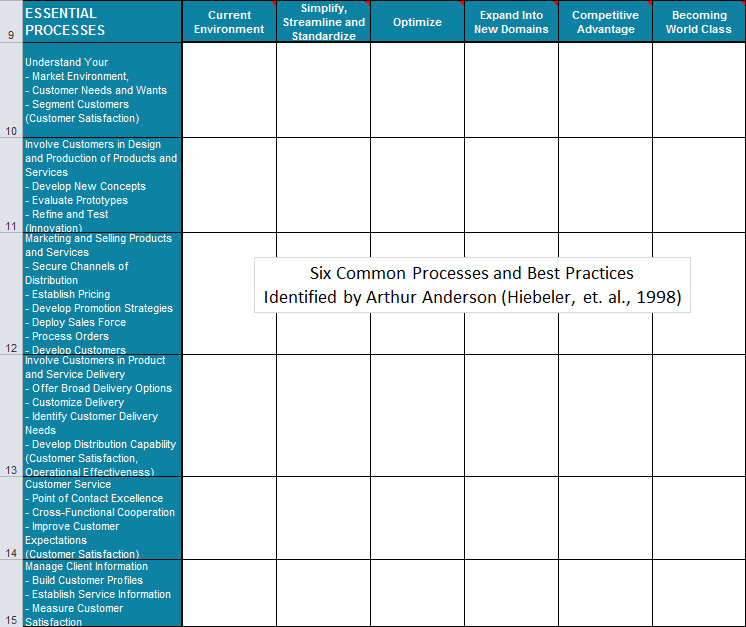
Organization
This section covers various aspects of the human element of the company and its transitional needs. Will this change the organization's structure or role? How will it affect core competencies? What changes will be required in the recognition and rewards systems? What training will be required? How will you create awareness and desire for this change?
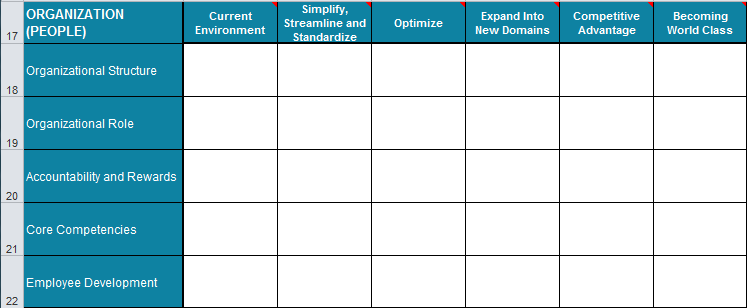
Technology
This section covers necessary technology changes like data, hardware and software. What information system changes will be required to implement your improvement? How long will that take? How will you get IT on your side to make the changes? Are there "off-the-shelf" tools like QI Macros that can meet your needs?
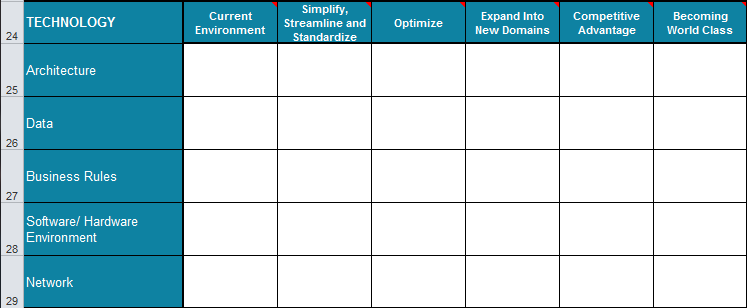
Transition Planning
Once you know where you are and where you want to go, the next step is to identify all of the activities required to move all four elements of the SPOT forward, in sync, to achieve the desired future. This involves more heavy thinking, because if you try to shift the Process or Technology without a plan to get the employees on board to support it, it will fail. The forces of inertia will hold the old behavior in place.
Every step forward requires the synchronized movement of all four elements. This is why new technology often sits idle waiting for the SPO to catch up. Or a process change waits on technology. Or an organization change doesn't have the desired effect.
Once a company starts shifting all four elements toward the desired future, it's easy to sustain the movement, but getting started is often hard.
Where do you want to be?
Every change, large or small, needs to be examined to determine what else needs to be aligned to ensure its success. I've seen too many projects fail to achieve desired results because teams forgot to align strategy, process, organization and people in service of the change. I've seen too many projects fail because the change wasn't woven into the new employee orientation training and reward systems.
The transition planning matrix can help you envision the future, identify the tarpits along the way and implement countermeasures to make sure the change survives and thrives.
Haven't you waited long enough?
Start creating your Transition Plan in just minutes.
Download a free 30-day trial. Get the Transition Plan now!
The Transition Plan is one of many tools included in QI Macros add-in for Excel.
QI Macros adds a new tab to Excel's menu, making it easy to find any tool you need. If you can't locate a tool, use the find tools feature on the far right side of QI Macros menu.


